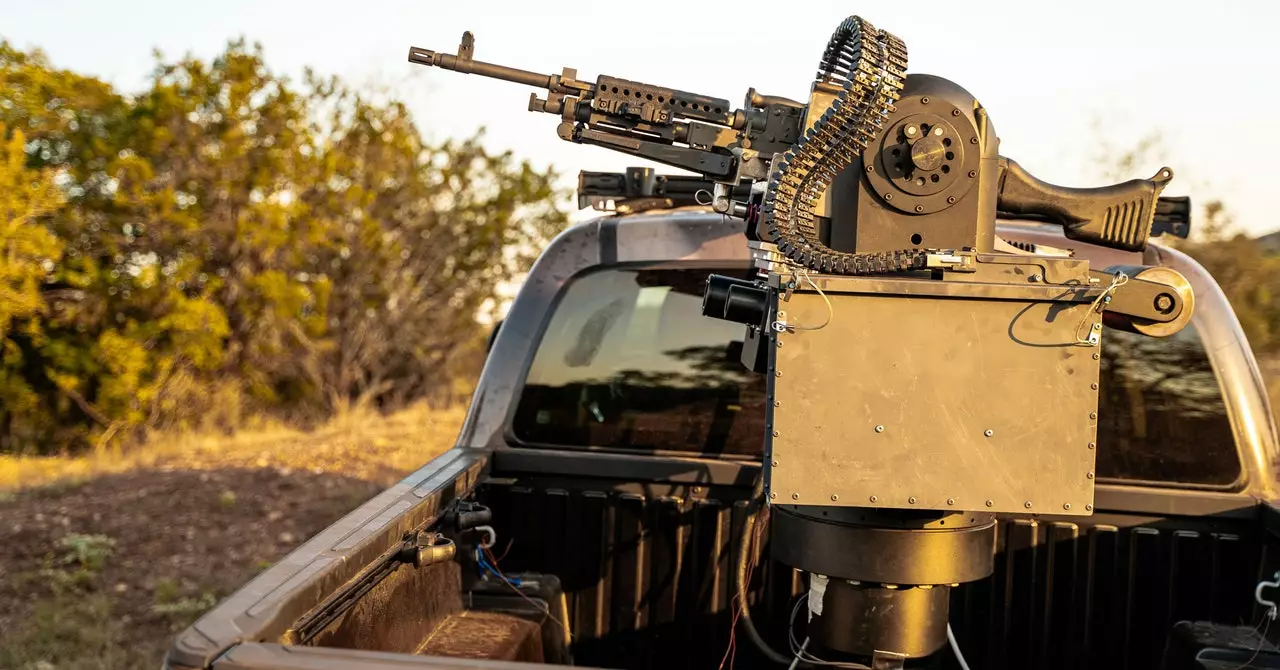In an era where drones have become a potent tool for adversaries, the U.S. military is presented with a formidable challenge. With the proliferation of low-cost, weaponized drones posing significant risks to American forces stationed abroad, the Pentagon is fervently exploring innovative solutions to counteract this evolving threat. Rather than relying solely on expensive munitions or the latest in directed energy technologies, military officials have begun to rethink the fundamentals of armament itself—reimagining the classic firearm as a response to modern warfare needs.
The emergence of drone warfare has reshaped the landscape of military engagements, creating a new layer of complexity. Small, agile drones can traverse the battlefield with considerable stealth, making them elusive targets for conventional firearms. Historically, the engagement of aerial threats has revolved around more sophisticated systems, yet these often come with high operational costs and logistical challenges. Furthermore, the rapid pace of drone technology advancement means that traditional methods may soon fall short without innovation.
The U.S. military’s quest to adapt to this new reality is rooted in the realization that counteracting drones doesn’t just necessitate advanced weaponry but also requires a shift in strategy. As adversaries prioritize drone deployment, the risk to troops increases exponentially if effective countermeasures are not established.
Amidst these challenges, the U.S. Defense Department has initiated efforts to develop a simpler, yet highly effective, approach to neutralize unmanned aerial threats. At the forefront of this initiative is the innovation introduced by Allen Control Systems in their autonomous robotic gun system known as the “Bullfrog.” This system integrates a traditional 7.62-mm M240 machine gun with advanced robotics, electro-optical sensors, and cutting-edge AI technology, aimed at enhancing target accuracy and reducing the margin of human error.
The Bullfrog’s ability to track and shoot fast-moving drone targets represents a significant leap forward in firearm technology. Unlike traditional weapons that rely heavily on the user’s skill and timing, this automated system allows for virtually instantaneous target acquisition, delivering precision fire without the typical delays associated with manual aiming. The results observed during recent demonstrations have reportedly impressed military officials, highlighting the potential effectiveness of this approach in actual combat scenarios.
The Role of Artificial Intelligence
One of the most revolutionary facets of the Bullfrog is its reliance on artificial intelligence, which plays a critical role in the decision-making process of engaging drone threats. By utilizing AI to manage target tracking and engagement, the system mitigates risks associated with stress and human error during high-pressure situations. The deployment of such autonomous capabilities marks a pivotal shift in military strategy, potentially allowing forces to operate more efficiently and focus on larger tactical objectives.
Moreover, the Bullfrog is emblematic of the military’s broader moves to integrate advanced technologies across its arsenal. The emphasis on automation and AI is not limited to the Bullfrog alone; it aligns with contemporaneous innovations in firearms and military hardware being tested and developed to meet the multifaceted challenges of modern warfare.
Broader Implications for Military Training and Strategy
As the military seeks to evolve its small arms to better counter drone threats, there’s growing consensus on the necessity of evolving training methodologies. The incorporation of counter-drone practices into standard military training routines highlights the recognition that future combat scenarios will increasingly involve airborne threats. This shift underscores the pressing need for troops to be well-versed in utilizing both traditional firearms equipped with modern technologies and understanding how to integrate these systems into broader combat strategies.
Moreover, the development of alternative ammunition types and the exploration of “smart” optics suggest a comprehensive strategy to enhance the combat effectiveness of soldiers in varied deployment environments. Balancing the introduction of new technology with the traditional skills of marksmanship is vital, ensuring that military personnel remain adaptive and versatile on the battlefield.
As the drone threat continues to evolve, the U.S. military’s ability to respond effectively rests on its willingness to adapt and innovate. By reimagining the classic firearm and integrating advanced technology such as artificial intelligence, the Pentagon is poised to enhance its defensive capabilities against aerial threats. The outcome of these advancements will not only redefine military engagement protocols but also shape the broader narratives of modern warfare for years to come. Balancing innovation with established practices remains essential, ensuring that the next generation of soldiers is equipped to face the complexities of a rapidly changing battlefield landscape.


Leave a Reply